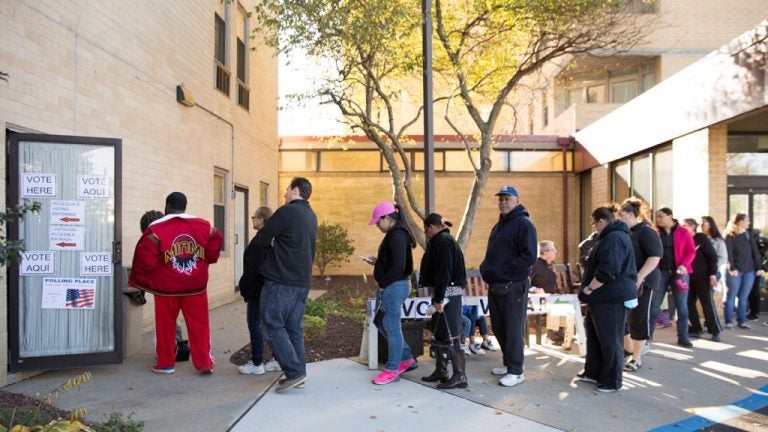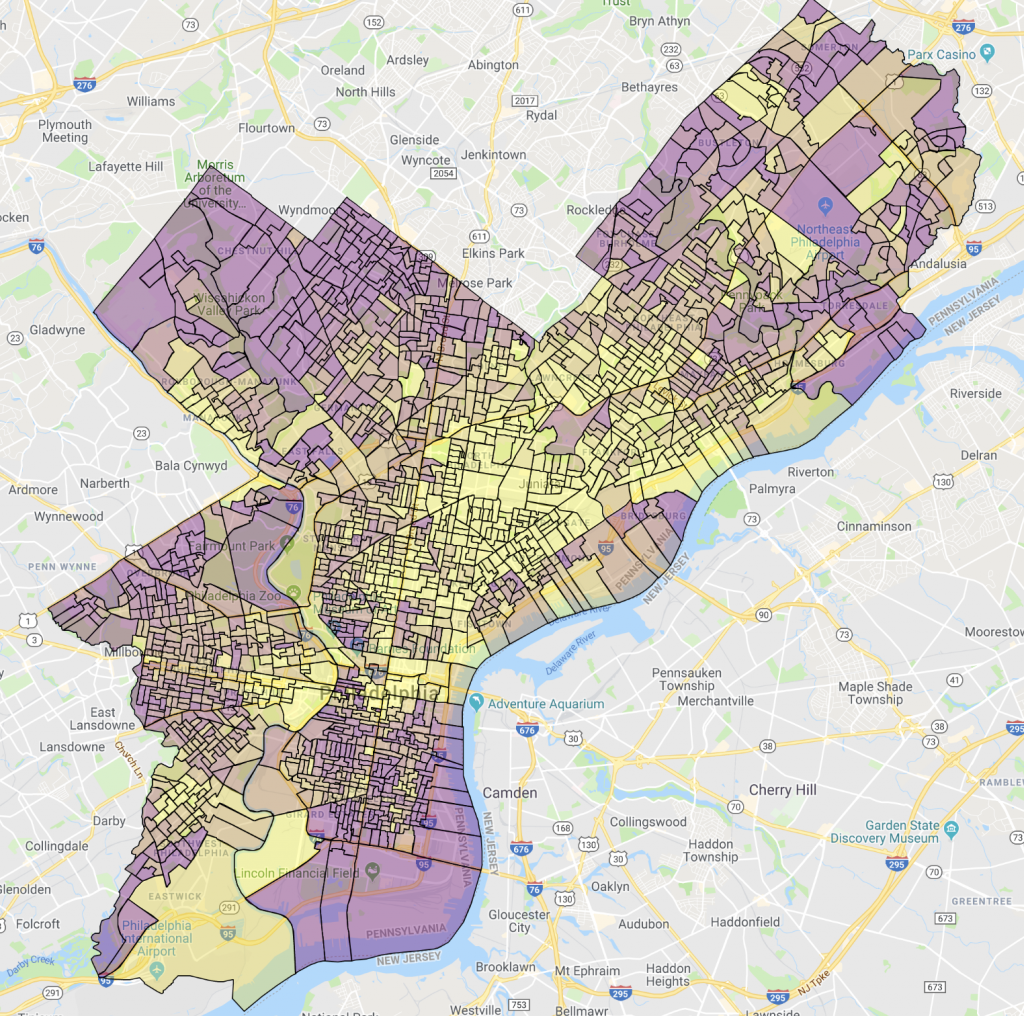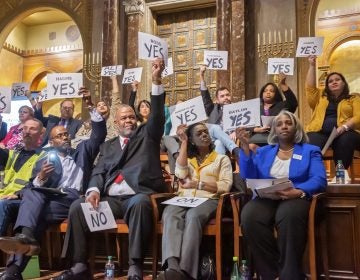Living a block from the polls makes you 28% more likely to vote
Fewer than one in three Philadelphians voted in the last mayoral primary, and that was for an open seat.

Voters line up outside the polls on Election Day in 2016 (WHYY, file)
Fewer than one in three Philadelphians voted in the last mayoral primary, and that was for an open seat. Even if we’re very lucky on Tuesday, turnout in the primary election that will decide whether to reelect Mayor Kenney — as well as a number of other city offices, including key City Council seats — might be one in four, or even lower.
I’m a data scientist so I decided to find out what exactly state voter data could tell me about the factors that shape turnout. I decided to hone in one simple question.
Does proximity to the polling place affect how likely voters are to turn out?
My findings revealed a voting trend that is intuitively sensible, but still surprising, and a little disturbing. People who live close to their polling places are significantly more likely to get out to the polls than people who live further away. And by “close,” I mean that people who live within 100m —roughly a city block — were 28% more likely to vote in primaries than people who live more than 200 m, or two blocks away. So one block changed turnout by nearly a third. And that 100m threshold is kind of a big deal. Voters who live between 100-200m, are just 4% more likely to vote than average. Beyond that, it’s apparently just too far.

This is a big effect. To give a sense, in 2016, the turnout in the presidential election was about 57% statewide, and only 50% in Philadelphia. In other words, a 14% relative boost would have gotten us to the state average – and not incidentally (had the lost votes been cast in similar proportion to the rest of the city) swung the state to Hillary.
If everyone lived close to their voting place or felt like it wasn’t a burden to go there, Philadelphia’s influence would be very different. And most people don’t live within this magic 100m radius. In Philadelphia, it’s only about one in 10, with the average voter having to go about three blocks to their polling place.
Any study like this is bound to invite objections. For instance, you might suppose that since retirement communities sometimes host polling places it might much easier to round up the residents and makes sure that they vote. The distance, in my calculations would be zero. It turns out that only about 2% of the population lives inside their polling places, and indeed, they tend to be among the oldest voters, and yes, they vote more than 50% more than voters around the city.
In general, though, the increased propensity for voting is actually lowest for the over 65 crowd (who, you’ll note, turn out at far higher numbers across the board). They only get a 14% bump by living nearby, while the youngsters see an 18% increase. It’s the middle-agers, like me, who really seem to respond to living next to a polling place. We’re more than 25% more likely than average if we live within a block.
There may also be subtle effects that are difficult to measure. Proximity to schools and other polling places might simply be more desirable real estate, and there are potential correlations between income and voting behavior, but even so, this is a big effect.
Or, it may also be supposed that voters are only apathetic in what they perceive to be low stake elections. Nope! It turns out that while the effect is smaller (only 9%) it shows up in national general elections as well.
So how did I get here? For the last 8 Philadelphia primaries, I looked at a sample of about 25,000 voter pulled from state data* and computed the fraction of recent primaries that each voter participated in, and how far they live from their polling place. I then broke up the sample into age groups to see if one group of citizens was more responsible than other, and whether walking a few blocks to the polling place could really impact turnout. Surely a block or two isn’t too much to ask?

While all articles on voter turnout tend to have a judgemental component to them, my main goal was to simply measure and note the effect for scientific purposes. On the other hand, if the party, or candidates, want to use this as an opportunity to motivate somewhat more reluctant voters, that’d be swell, too.
* Basically a database of every voter in the county, where they live, and which elections they voted in — pretty detailed, and a little creepy, but yours for $20 from the state.
WHYY is your source for fact-based, in-depth journalism and information. As a nonprofit organization, we rely on financial support from readers like you. Please give today.







